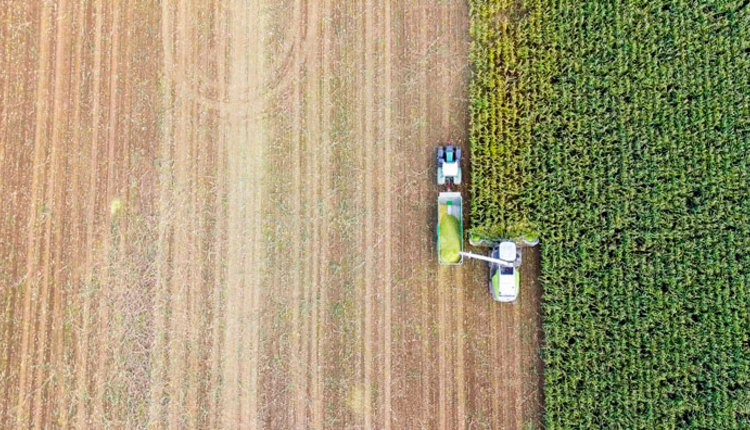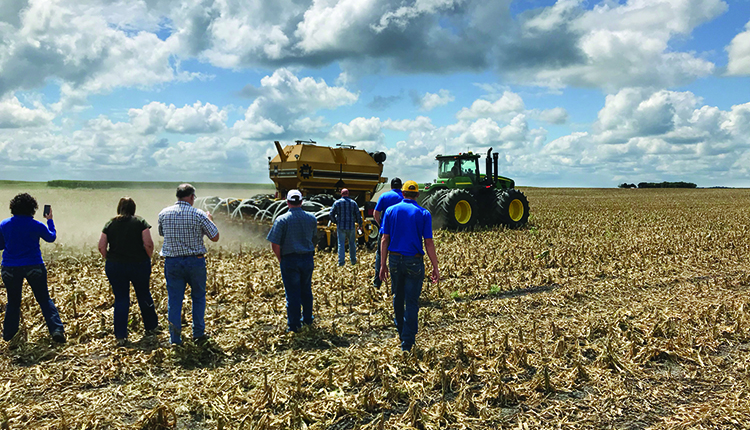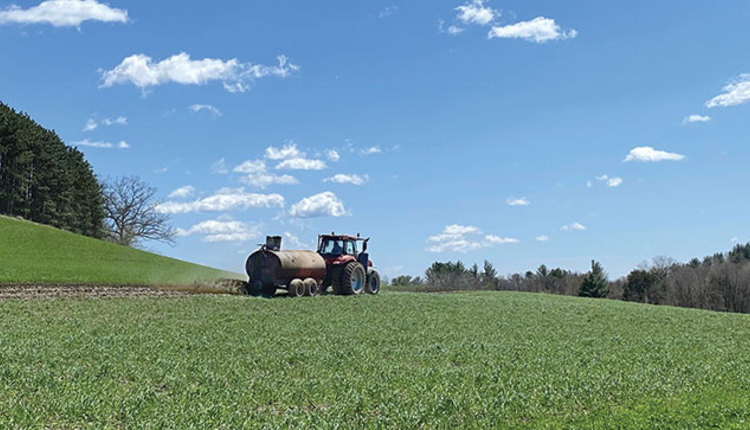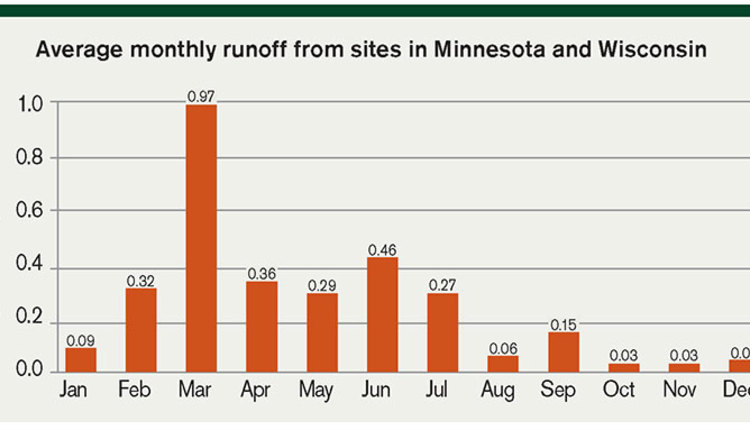The authors serve as the agriculture water quality program manager and the agriculture water quality outreach specialist, respectively, for the University of Wisconsin-Madison Division of Extension.

Providing crop nutrient needs requires year-round planning. As the seasons change, it is worth revisiting your nutrient management plan and prioritizing which fields need applications of phosphorus and potassium for next year’s crop.
Fall and winter nutrient applications can result in unintentional nutrient loss to local water resources. Field management decisions should take into account the conditions that are likely to initiate runoff and nutrient loss to avoid high loss events.
A seven-year study
Discovery Farms, an on-farm water quality research program in the Division of Extension at the University of Wisconsin-Madison, conducts water quality monitoring on farms throughout Wisconsin. This research allows farmers to adapt management practices to avoid nutrient losses and maintain productivity and profitability.
In southern Wisconsin, Discovery Farms monitored surface runoff from two sites on a corn and soybean farm for seven years. The farm practices strip-tillage and vertical tillage.
Phosphorus and potassium were typically surface applied in the fall, with nitrogen applied in the spring. On-farm monitoring revealed that nutrients surface applied in the fall have nearly six months to interact with runoff water before plants can use the nutrient during the following growing season (Figure 1).
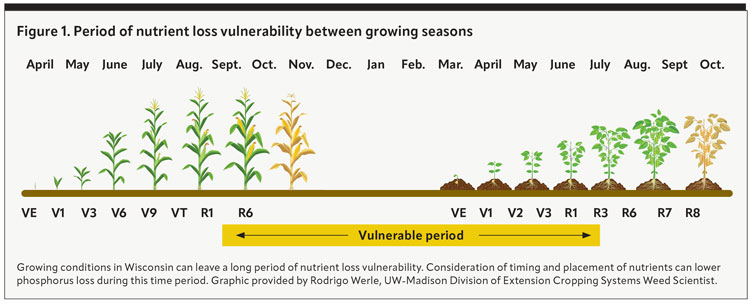
On this farm where fields are relatively flat and conservation practices are in place, dissolved phosphorus loss is a bigger concern than soil erosion and particulate phosphorus loss. In these two basins, 80% of the total phosphorus loss in the study period was in the dissolved form.
Watch out for winter
In Wisconsin, late winter runoff accounts for a large portion of the annual runoff volume. Snowmelt and spring rains occur while the soil is saturated or has a reduced capacity to absorb water. Over the seven-year monitoring period, each field had at least three years where over 95% of the phosphorus loss occurred between fall fertilization and spring planting (Figure 2). About 70 pounds per acre of phosphorus was surface applied to each field in November during monitoring years 2017, 2018, and 2019. Elevated phosphorus losses were observed in each of those years after surface broadcast, unincorporated, fall fertilizer applications. The majority of these losses occurred from subsequent runoff events when soils were frozen.
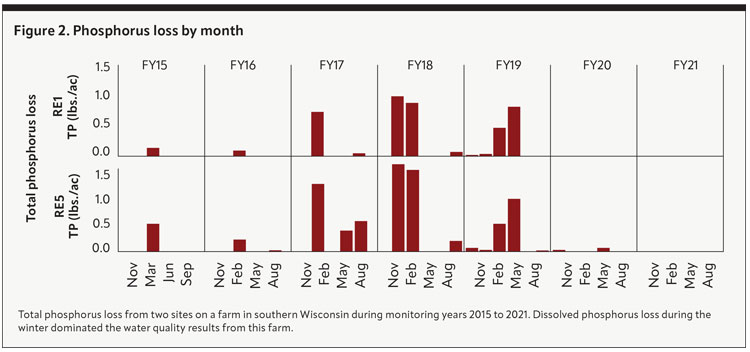
In monitoring year 2020, the farm used a half rate of surface applied phosphorus in the fall, and much lower phosphorus loss was observed by water quality monitoring stations. In 2021, the farm switched to a spring application of phosphorus fertilizer that was incorporated through strip tillage, and very low phosphorus loss was observed during the frozen ground time period.
Weather is an important factor to consider when connecting field practices to water quality measurements. Monitoring years 2020 and 2021 were years with drier conditions and less runoff overall. Contributing lower phosphorus loss entirely to a switch in practices would be inappropriate based on data from this farm alone. However, we can use the rest of the Discovery Farms database to look for trends in this case. In tillage and no-till systems of Wisconsin and Minnesota, when nutrients were applied in the fall and winter, monthly phosphorus losses in January, February, and March were elevated (Figure 3).
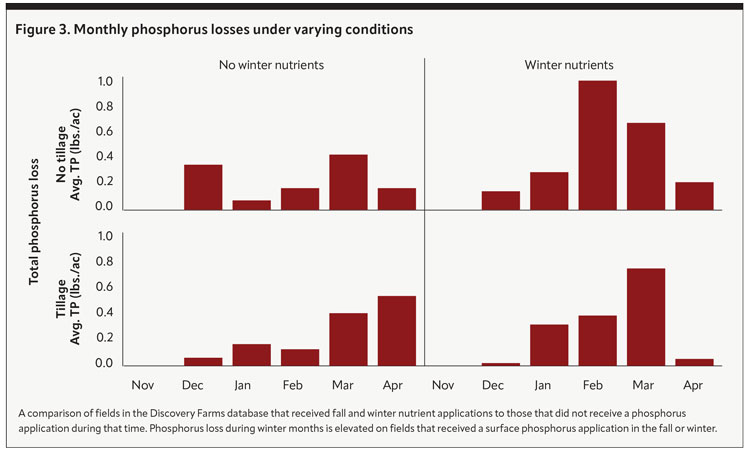
Measuring the losses
Fields with conservation practices in place to control soil loss have a low erosion risk, so consider timing and placement to avoid dissolved phosphorus losses. Runoff on frozen ground is difficult to control since frozen soil acts like a solid block, obstructing infiltration benefits of typical conservation practices like improved soil structure from cover crops and reduced tillage.
Phosphorus applied in the fall should be placed below the surface to reduce the interaction with water moving across the surface. Phosphorus applications that cannot be placed below the surface should wait until spring to close the gap between application and the time that crops will need that nutrient. These strategies are the key to reducing overall phosphorus loss.
The amount of phosphorus lost in this case is not a significant economic loss for the farmer, as losses are typically about 1 to 3 pounds per year per acre. However, these losses can significantly impact local water bodies. The rule of thumb is that 1 pound of phosphorus has the potential to grow 300 to 500 pounds of algae in a water body. By making this simple change, and keeping even 1 pound per acre of phosphorus in the field or in the crop instead of in runoff, our local waters will benefit.
As a manager, the best practice is to minimize the available nutrient sources on the soil surface while the soil is frozen because water
movement and soil temperature are out of your control. To reduce phosphorus concentration in winter and early spring runoff, utilize spring fertility applications or place fertilizer below the soil surface.
This article appeared in the November 2023 issue of Journal of Nutrient Management on pages 10-12. Not a subscriber? Click to get the print magazine.





